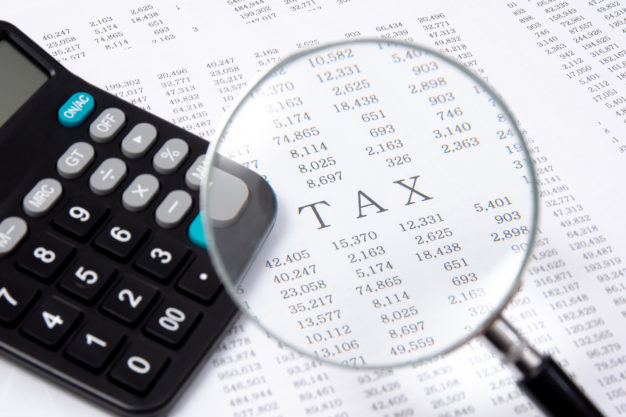IRS Urges Taxpayers to Choose Tax Preparers Carefully to Protect Data (IR-2025-21)
The IRS reminded taxpayers to choose the right tax professional to help them avoid tax-related identity theft and financial harm. […]
Read MoreTaxpayers may rely on an IRS notice that describes forthcoming regulations for the alternative fuel vehicle refueling property credit. The notice focuses on the census tract requirement added by the Inflation Reduction Act of 2022 (P.L. 117-169). This requirement limits the credit to qualified property that is installed in an eligible census tract. An eligible census tract is a population census tract in the United States or in a U.S. territory that is:
— a low-income community as described for purposes of the new markets tax credit, or
— not an urban area.
The proposed regulations will provide that qualified depreciable property is placed in service in the tax year in which the property’s depreciation period begins under the taxpayer’s depreciation practice; or, if earlier, the tax year in which the property is placed in a condition or state of readiness and availability for a specifically assigned function in a trade or for the production of income.
Non-depreciable property is placed in service when it is installed at the taxpayer’s principal residence and is operational.
For purposes of the new markets tax credit (NMTC), the Community Development Financial Institutions Fund (CDFI Fund) uses five-year estimates to identify Low-income communities. For qualified alternative fuel vehicle refueling property that is placed in service after December 31, 2022, and before January 1, 2025, the IRS intends to allow taxpayers to use either the 2011-2015 NMTC tracts or the 2016-2020 NMTC tracts to determine if property is placed in service in a low-income community.
For property placed in service after 2024, taxpayers would have to use the 2016-2020 NMTC tracts. The IRS expects the 2016-2020 NMTC tracts to remain eligible locations through 2029. Updated NMTC updated census tracts would then provide the determination of low-income community census tracts, and the IRS would issue additional guidance to reflect the updates.
Low-income communities based on the 2011-2015 NMTC tracts are listed in Appendix A of the notice, available at https://www.irs.gov/pub/irs-drop/appendix-a-list-of-2015-census-tract-boundary-30c-eligible-tracts-v2-1-4-2024.pdf.
Low-income communities based on the 2016-2020 NMTC tracts are listed in Appendix B of the notice, available at https://www.irs.gov/pub/irs-drop/appendix-b-list-of-2020-census-tract-boundary-30c-eligible-tracts-v2-1-4-2024.pdf.
As for census tracts that are not urban areas, the IRS intends to propose regulations that rely on census blocks, which are the smallest geographic area for which the Census Bureau collects and tabulates decennial data. The regulations are expected to provide that any population census tract (using the 2020 Census boundaries) in which at least 10 percent of the census blocks are not designated as urban areas would be a “non-urban census tract.”
Taxpayers can find census blocks identified as urban at https://www.federalregister.gov/documents/2022/12/29/2022-28286/2020-census-qualifying-urban-areas-and-final-criteria-clarifications.
Since the non-urban determinations based on the 2020 Census were released in 2023, the IRS expects that determinations based on the 2030 Census will be released in 2033. The IRS will provide additional guidance to reflect the 2030 determinations. Until then, taxpayers may rely on the 2020 determinations.
The regulations will determine whether property is placed in service in a eligible census tract based on the 11-digit census tract GEOID for the population census tract. An 11-digit census tract GEOID is a numeric identifier associated with a geographic area, comprising a two-digit state GEOID, three-digit county GEOID, and six-digit census tract GEOID. Thus, the 11-digit census tract GEOID provides a unique identifier for each population census tract. The 11-digit census tract GEOIDs may vary for any individual latitude/longitude point based on different census tract boundary delineation dates over time.
Qualified alternative fuel refueling property placed in service after December 31, 2022, and before January 1, 2025, will be considered placed in service in an eligible census tract if the 11-digit census tract GEOID for the population census tract in which it is placed in service is listed in Appendix A or Appendix B. However, for property placed in service on or after January 1, 2025, and before January 1, 2030, taxpayers must use Appendix B because it is based on the 2020 census tract boundaries.
Similarly, for property placed in service after December 31, 2022, and before January 1, 2025, both the 2015 census tract boundaries and the 2020 census tract boundaries are relevant. For property placed in service on or after January 1, 2025, and before January 1, 2030, only the 2020 census tract boundaries are relevant.
Taxpayers can determine the 11-digit census tract GEOID of a location under the 2015 census tract boundaries by using the CDFI mapping tool available via https://www.cdfifund.gov/cims .
Taxpayers can determine the 11-digit census tract GEOID of a location under the 2020 census tract boundaries using the Census Geocoder, available via https://geocoding.geo.census.gov/geocoder/geographies/address?form . or the latitude and longitude point at https://geocoding.geo.census.gov/geocoder/geographies/coordinates?form .
The IRS reminded taxpayers to choose the right tax professional to help them avoid tax-related identity theft and financial harm. […]
Read More
The IRS provided six tips to help taxpayers file their 2024 tax returns more easily. Taxpayers should follow these steps […]
Read More
The IRS encouraged taxpayers to make essential preparations and be aware of significant changes that may affect their 2024 tax […]
Read More
Guidance is provided for property and casualty insurers that write inland marine insurance and pay the State Fire Marshal Regulatory […]
Read More
The IRS released the optional standard mileage rates for 2025. Most taxpayers may use these rates to compute deductible costs […]
Read More
The IRS, in partnership with the Coalition Against Scam and Scheme Threats (CASST), has unveiled new initiatives for the 2025 […]
Read More
The IRS reminded disaster-area taxpayers that they have until February 3, 2025, to file their 2023 returns, in the entire […]
Read More
The IRS has announced plans to issue automatic payments to eligible individuals who failed to claim the Recovery Rebate Credit on their […]
Read More